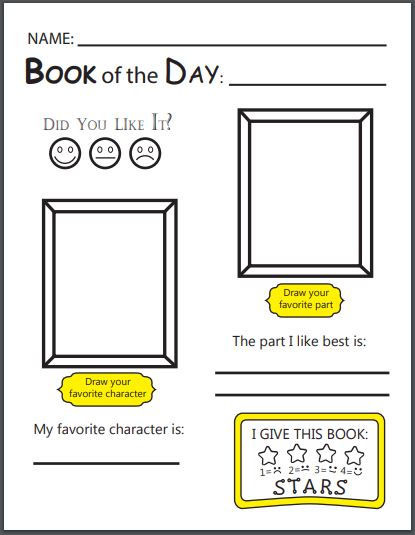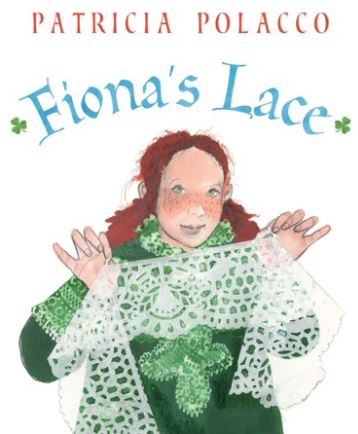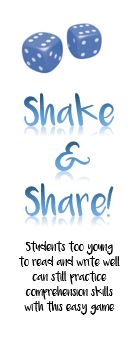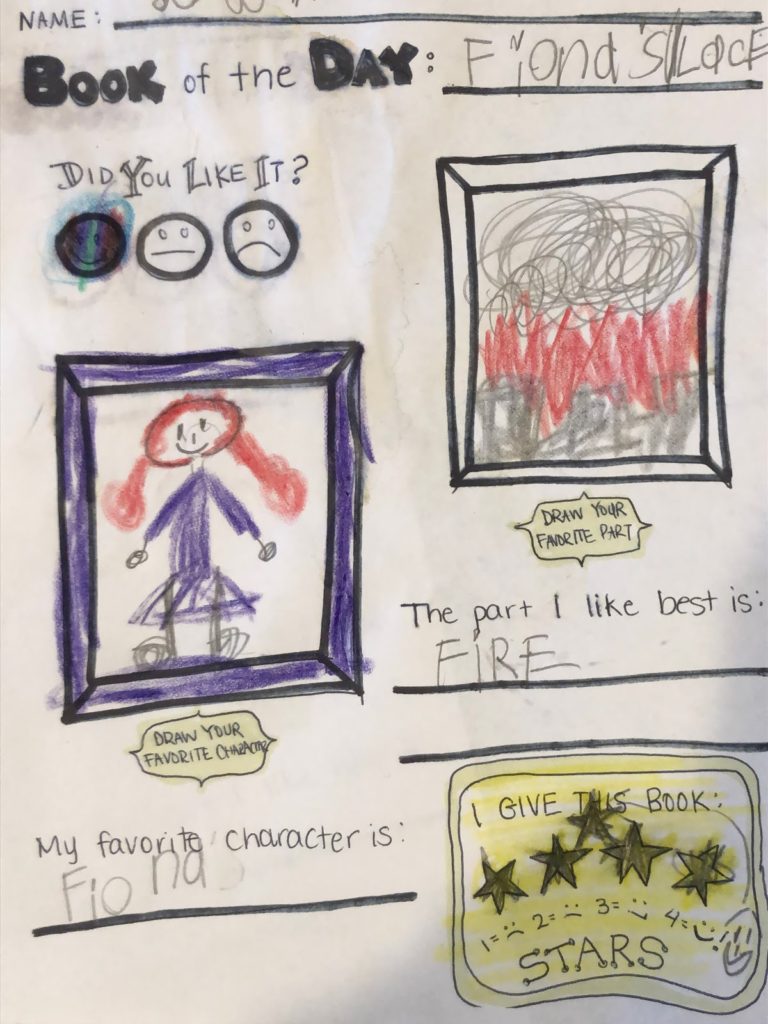If you’ve stumbled here from Pinterest, or some other site … welcome! While each of these books/lessons can stand alone, they are also a part of a year-long series that we have taught at our homeschool co-op. Each lesson builds in part on the one before. Some stories also have similar themes with the books that go before/after them. If you are interested in more information, or to see the complete booklist, check out our main page, More FIAR – Inspired Literature-Based Lesson Plans, especially for homeschool and homeschool co-ops. Thanks for looking around, and welcome to the site!
Fiona’s Lace
by Patricia Polacco
What I Need:
Fiona’s Lace Book
Fiona’s Lace Handwriting Sheet
Lace Samples (to show the class)
Map of the World that shows Ireland, Europe, United States
Dice for the Shake and Share Game
Optional: Book of the Day reading comprehension worksheet
Review:
- Who were the main characters in last week’s story (Rachel and Grisha)
- What country were they leaving? (Russia)
- Why were they leaving? (Cossacks wanted all the Jews gone, under heavy persecution)
- And what Country did they come to?
- Does anyone remember the name of the island they landed on when they first arrived in America (Ellis Island)
- And what did they see as their boat was approaching the island? (The Statue of Liberty)
Introduce Today’s Story:
Now – who can tell me a reason why someone may want to leave their country? This is where they have lived their whole life. They have family here, their houses, their friends, everything they’ve ever known – so why would they want to leave?
- famine
- persecution
- poverty/loss of employment
- sickness
- the promise of a better life
Take a moment to show Ireland on the Map (and the flag, if you’d like). Then, using the map…
Explain again that Ireland is a COUNTRY
It is located within the CONTINENT of EUROPE
They were going to cross the ATLANTIC OCEAN
To travel to the COUNTRY of the United States
in the CONTINENT of North America
to the STATE of New York, then to the STATE of Illinois
Then finally to the CITY of Chicago
Located right on LAKE Michigan
And the STREET called, Dekonen Street*
This a perfect time to emphasize again, these geographical differences, especially since Polacco highlights all these locations in her story
*There is a real DeKoven St located in Chicago, where the real Great Chicago Fire started in 1871. I’m not sure if Polacco got the name of the street wrong, if the road was renamed, or if this was a separate street that doesn’t exist anymore. Either way, the story is based on facts.*
Read the Story
As you read the story, be sure to explain things like, “Textile Factory” (produces fabrics), “Blarney Stone” (Irish stone they would touch if telling a lie) and “Spark Her” (trying to get a girl to notice him / start a relationship) — or, if you’d like, you can probably leave them out.
Other things to emphasise/make sure are understood:
- Was it hard to leave? How do we know?
- Was America what they expected? (no)
- Why / Why not?
- And in the end – Why was Fiona willing to give up her valuable lace? Is there something more important than money?
*If you are following along with this or any other type of read-aloud curriculum, it is good to begin to encourage the class to give answers back to some of these questions. Can they hear the “why” in the story? True, these stories are well above 1st-grade reading level. But can they pull out anything from the comprehension to understand what you are reading? Pause often to help them understand and emphasize hard passages, but also keep asking questions as you read to keep them engaged, and see if they are able to practice figuring out things from the context.
*When I read this book, I chose to leave out just a few parts. There is one part where the dad is telling a story on All Hallows Eve. He doesn’t end up finishing the story, but for my littles, even a hint of scary is too much. It’s just a paragraph or two, and we left it out. You decide what’s best for your crew.
Classroom Games on Comprehension – Language Arts
- Draw 6 squares on the board, filled in with 6 numbers like the six sides of a die.
- If you have a large class, divide the class into smaller groups. If you less than 8, or a younger class, just stay as a group and do the activity together
- Explain that depending on which number they roll, they are going to answer a question about the story we just read
- Who are the main characters?
- What is the story about?
- When does the story take place?
- Where does the story take place?
- What happens at the beginning/middle/ and end of the story?
- What was your favorite part of the story?
- Going down the line of kiddos, Roll Away
Reading Comprehension Worksheet
This worksheet, below, is a simple and light way to begin to introduce the class to reading comprehension, without the pressure of having to know how to write well. If you have students that don’t write at all, not a big deal – because they can express most of their thoughts with pictures and by circling stars, happy faces, etc. It is a great exercise to follow the “Shake and Share”game and to get them thinking about what they have read. I created this worksheet for Fiona’s Lace, but left it blank – because this is probably one I will come back to again for others books.
 |
| Click here for printable version |
Handwriting
If you’re following along with this plan for the year, hopefully copywork should be getting a little easier by now. Remind the class to start their letters at the top, and then trace this verse from Proverbs 21:5A, a fitting go-along verse with the story.
That’s it for this week! To see what we’ve done so far in our Homeschool Co-op’s Literature Series this year, click here. Each lesson builds on the one before and seeks to cover basic geography within the book, historical contexts, a handwriting sheet, and a language arts lesson, as it applies to the book.
Or, you can check out the complete Learning the ABCs through Literature Series, which is a similar series that we did with this same group of kiddos a year earlier. Both of these series of books have been inspired by the Five in a Row curriculum, with many of the books being the same. The ideas, implementation of it for a co-op, and printables are all my own, unless otherwise indicated. Thanks for stopping by to check it out!










